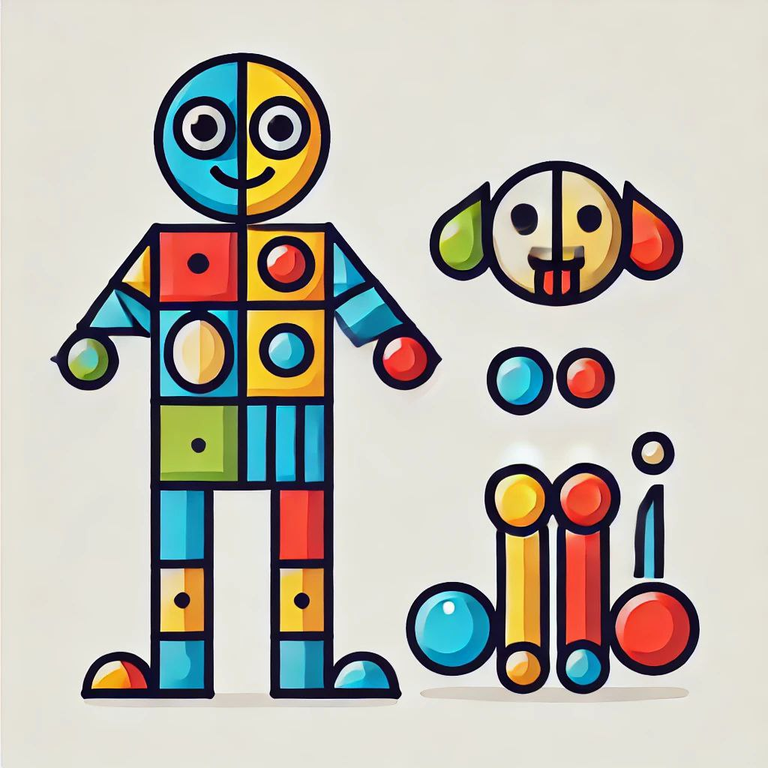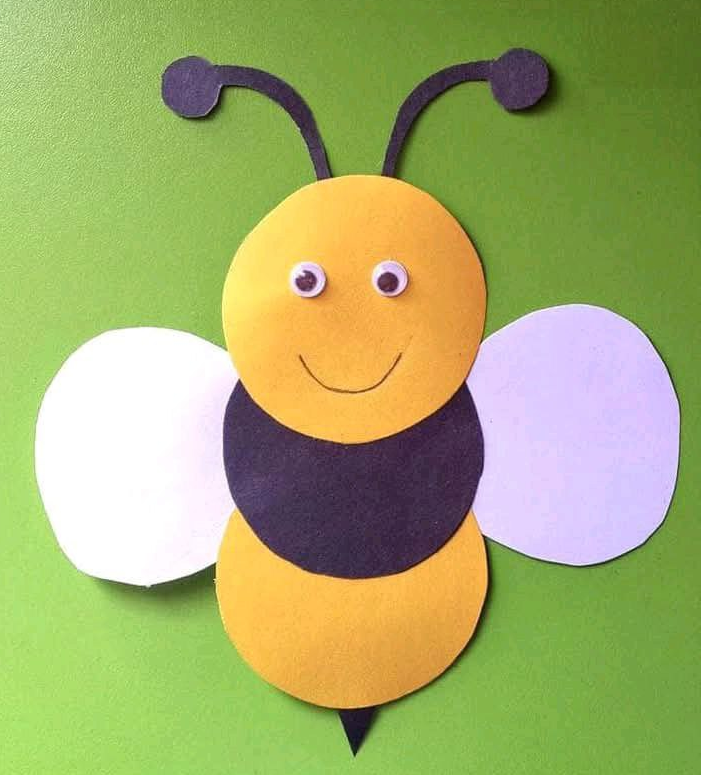It's going to be a week-long mid-term break. Truly, the 7-5 job as a teacher is no mean business. Teachers should always be appreciated. Of all the things in my to-do list is to create contents on Hive and hopefully get a bit active here. Definitely, I will still make out time for home lessons for my pupils. it's not going to be regular school curriculum, our focus will be on creative arts and crafts.
Are you familiar with those fun-looking images of humans and animals in children's books? They are generally called geometric illustrations or shape art. More specifically, they could be cartoon illustrations or whimsical illustrations. These illustrations are designed to be colorful, engaging, and imaginative, often with exaggerated features or expressions to capture children's attention and make the story more visually appealing.
These images are typically created using simple shapes like circles, squares, triangles, and rectangles to form characters and objects in a fun, easy-to-replicate style. They are commonly used to teach children about shapes while encouraging creativity and artistic expression. Below is an example of the illustrations or shape art.

As a formal definition, shape art, or geometric illustrations, is a creative technique that uses basic shapes such as circles, triangles, and squares to form fun and simple images. This artistic style is particularly popular in children's books and DIY projects, helping young learners engage with art in an intuitive and structured way. Beyond the fun, shape art provides developmental benefits that enhance a child’s learning process and artistic growth. Let's learn how these geometric illustrations can boost learners' learning and artistic skills
1. Shape art are building block of cognitive skills in learners
The geometric illustrations introduce children to basic shapes, which are foundational elements of geometry and spatial awareness. When children create art using simple shapes, they are unconsciously learning how to recognize patterns, understand spatial relationships, and categorize objects based on their forms. This visual literacy is crucial for cognitive development and sets the stage for mathematical reasoning.
2. Shape art develop fine motor skills in learners.
Drawing or tracing geometric shapes helps kids develop fine motor skills by improving hand-eye coordination. As children practice arranging shapes to form familiar objects like animals or humans, they fine-tune their control over pencils, scissors, and art tools, which is essential for handwriting and other precise tasks.
3. Shape art boosts learners' creativity within constraints
Though geometric illustrations rely on basic shapes, the possibilities are limitless. Encouraging children to form complex scenes with just simple forms nurtures creativity within boundaries, teaching them to think outside the box while adhering to certain rules. For instance, a child may use a combination of triangles, rectangles, and circles to depict a house, a car, or even a whimsical creature. See an example of an insect created with circles.

4. Shape art reinforces shape and colour recognition
Shape art helps children solidify their knowledge of shapes while adding another layer of understanding through the use of colours. Working with shapes, they learn to differentiate between various shapes and experiment with color schemes, gaining a sense of how colours interact. This can enhance their understanding of both geometry and art.
5. Shape art enhances confidence and artistic expression in learners
Working with basic shapes is accessible to even the youngest artists, making it less intimidating than more complex drawing techniques. As children create characters and scenes from simple forms, they experience a sense of accomplishment, which boosts their confidence in their artistic abilities. This confidence, in turn, encourages them to explore more advanced artistic techniques as they progress.

Shape art or geometric illustrations are not only a delightful artistic approach but also a powerful tool for boosting children's cognitive, motor, and creative skills. Engaging kids with these forms of art will help develop key learning abilities that that will prepare them for more advanced concepts in both academic and artistic fields.
If you're a regular or home-school teacher, and you are not yet utilizing shape arts for your leaners, you're missing out as well as depriving the development of artistic prowess and creativity in the learners. Start now!
Posted Using InLeo Alpha



